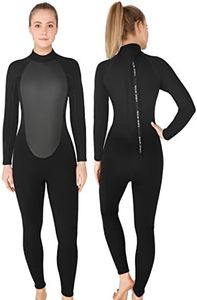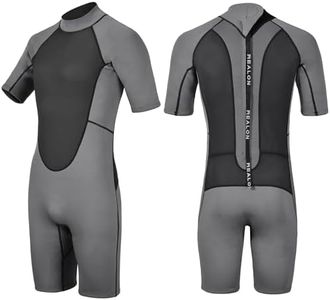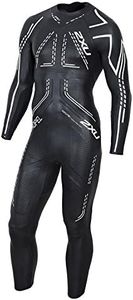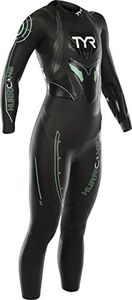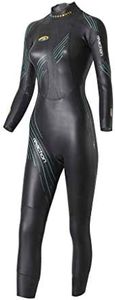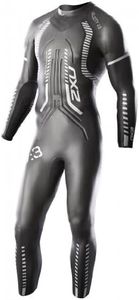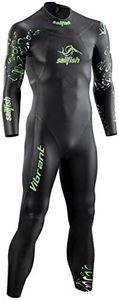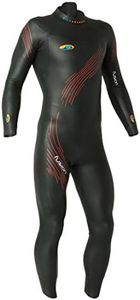We Use CookiesWe use cookies to enhance the security, performance,
functionality and for analytical and promotional activities. By continuing to browse this site you
are agreeing to our privacy policy
10 Best Triathlon Wetsuits
From leading brands and best sellers available on the web.Buying Guide for the Best Triathlon Wetsuits
Choosing a triathlon wetsuit is an important decision whether you’re new to the sport or looking to upgrade your gear. The right wetsuit can help you swim faster, keep you warmer, and make the overall event more comfortable. When picking a triathlon wetsuit, you should think about how it fits, what conditions you’ll be swimming in, and your swimming goals. Understanding the major specifications will help you identify what features matter most for your type of race and personal swimming style.Material ThicknessWetsuit material is usually made of neoprene, and its thickness impacts both buoyancy and flexibility. Thicker wetsuits (around 4-5mm) provide more warmth and buoyancy, making them ideal for colder water or for swimmers who want more lift in the legs. Thinner suits (around 1-2mm) are more flexible and are better for warmer water or for more experienced swimmers who want full range of motion. When choosing, consider the usual water temperatures you’ll compete in as well as your comfort with buoyancy versus flexibility.
Fit and SizingThe fit of a wetsuit is crucial to its performance. A suit that’s too loose will let water in and defeat the purpose, while one that’s too tight can restrict your movement and even make breathing difficult. Fit usually varies by brand, so always refer to sizing charts, and if possible, try the suit on. Pay attention to how it sits at the neck, wrists, and ankles since those areas should feel snug but not uncomfortable. Think about your body shape and how much flexibility you need for your swim stroke when picking the right fit.
FlexibilityFlexibility refers to how easily you can move your arms, shoulders, and torso while wearing the wetsuit. Greater flexibility generally means easier swimming and less fatigue. Some suits use more flexible neoprene in the arms and shoulders, which benefits swimmers who want full range of motion. If your swim stroke is powerful or you’re training for longer events, focus on a suit with high flexibility in these areas.
BuoyancyWetsuit buoyancy comes mainly from the neoprene's thickness, and it helps keep your body higher in the water, making swimming easier and faster for many people. Some wetsuits have more buoyant panels in the legs to help keep them up, which is particularly useful if you have a tendency for your legs to sink while swimming. If you’re newer to swimming or want extra help staying afloat, prioritize higher buoyancy in the suit.
Zipper Type and PlacementWetsuits come with different zipper designs, including back zippers, front zippers, and breakaway (quick-release) zippers. Back zippers are traditional and easy for most to manage. Front zippers can make it easier to get in and out of the suit solo and can also minimize water entry. Consider which is easier for you to handle, especially if you expect to be changing in a hurry during a race.
Seam ConstructionThe way the wetsuit’s panels are stitched or bonded affects both its comfort and lifespan. Flatlock seams are common in entry-level suits and are good for warmer water, but they can let some water in. Sealed or taped seams are better at keeping water out and provide more warmth, but may come at a higher price. Pick the seam style depending on the water temperature you’ll most often encounter and how much comfort you need during longer swims.

